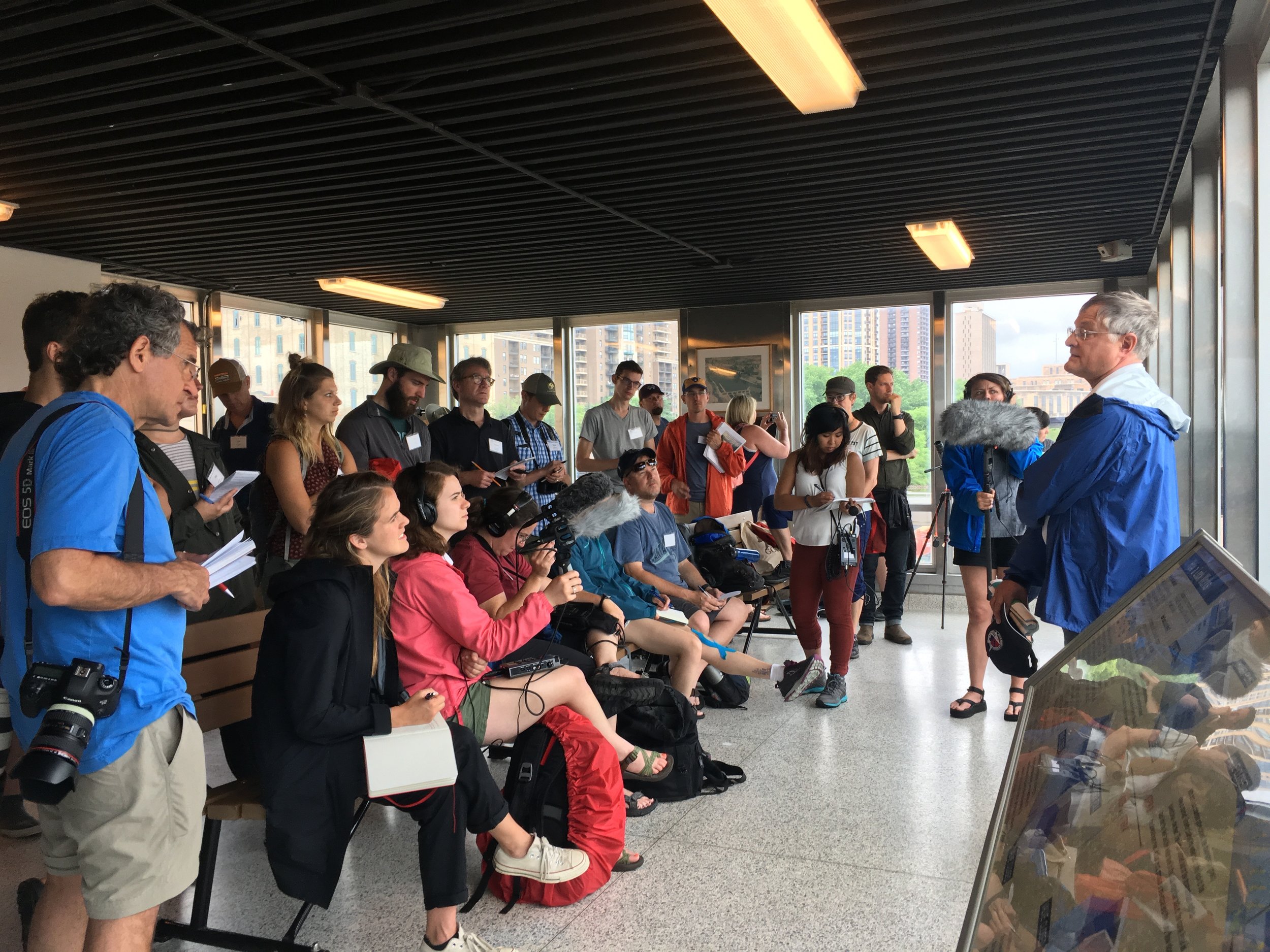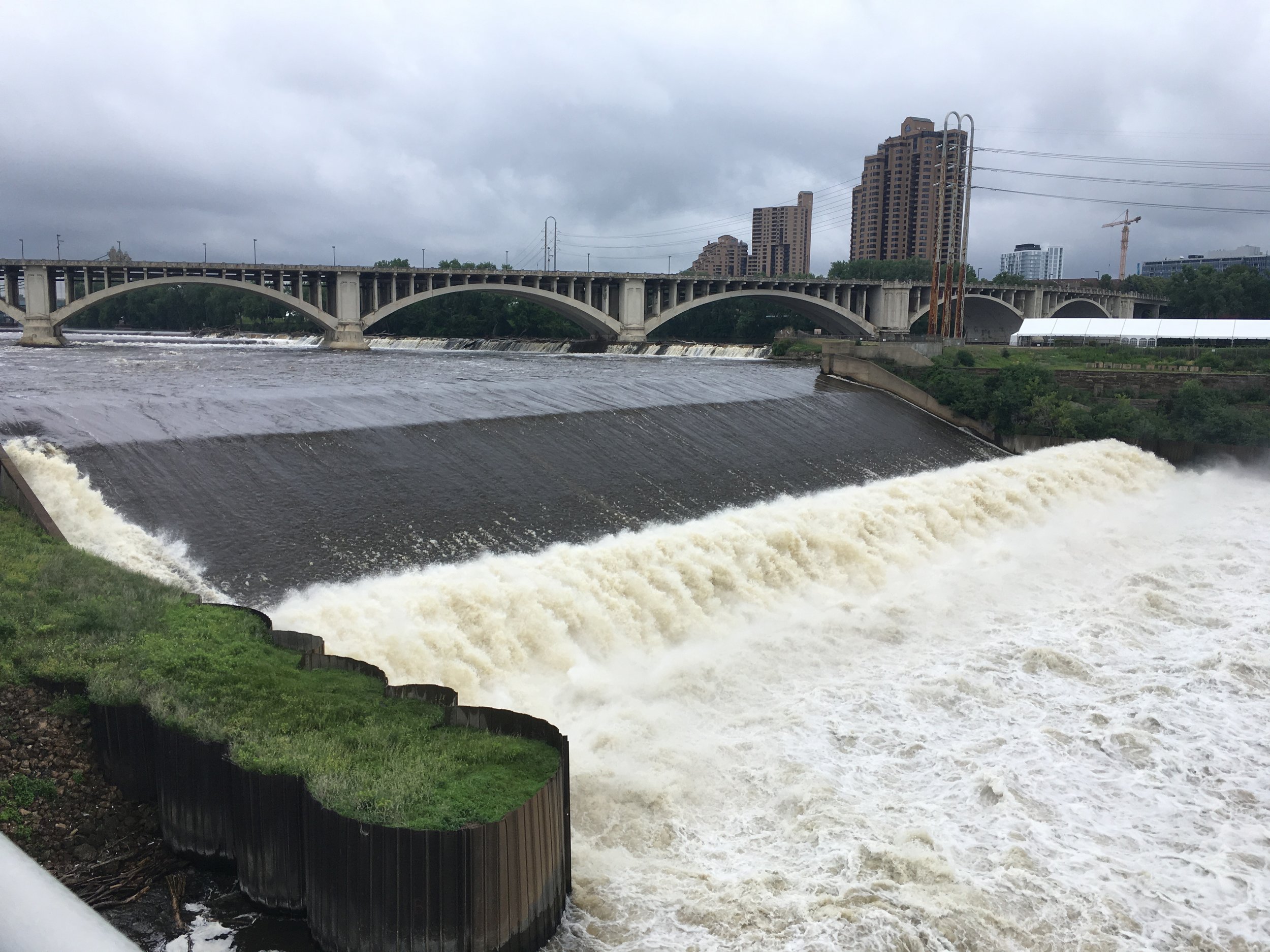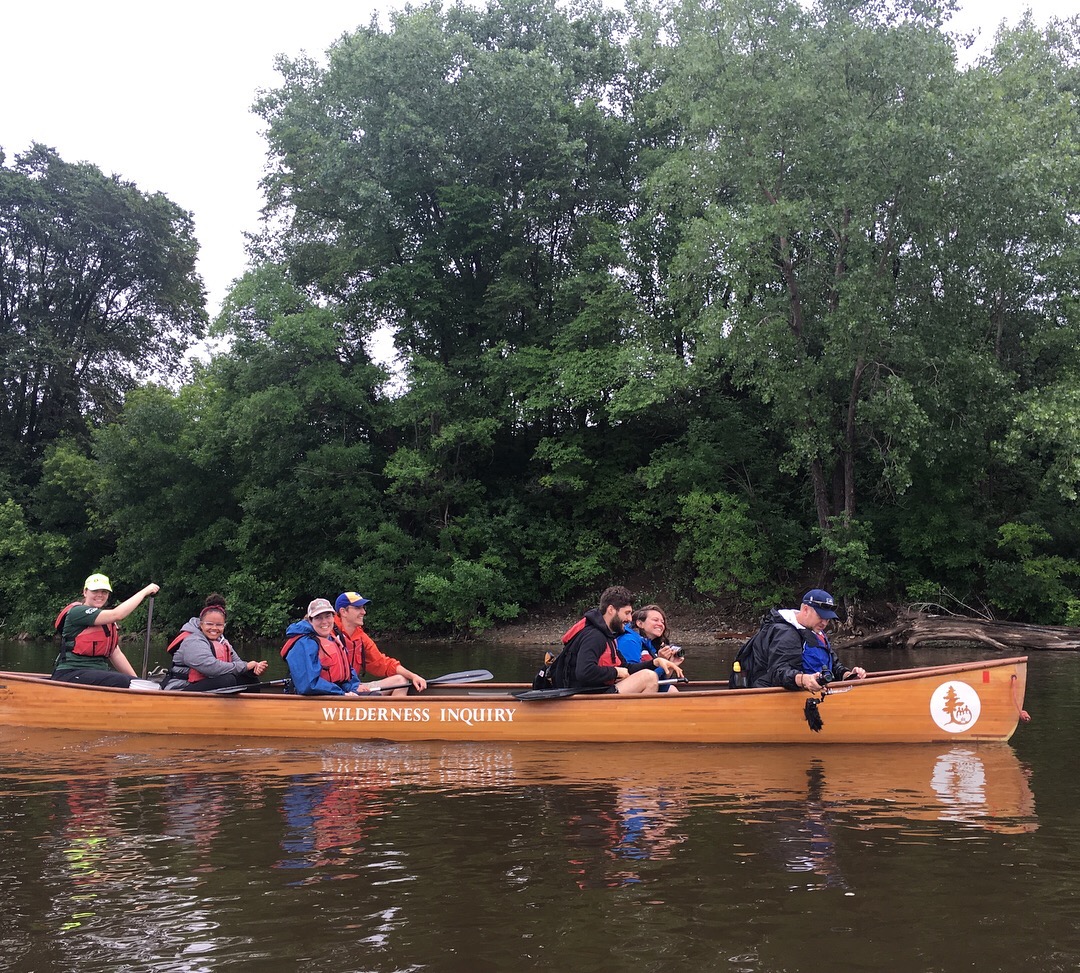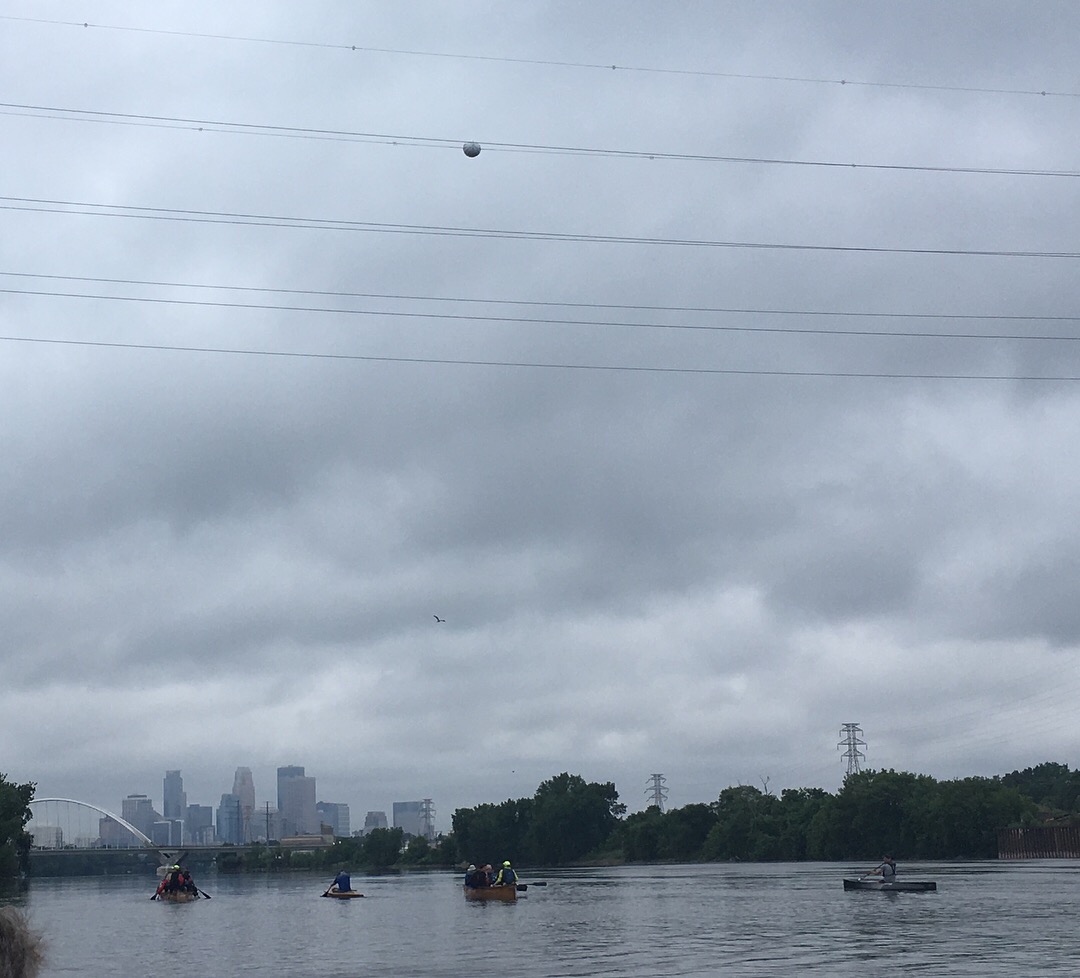Day 3: Reconnecting to and Restoring the River, Farm Bill 101, Soil Health
Reconnecting a Neighborhood to Its River
Minneapolis has one of the nation’s most celebrated public parks systems, partly due to forward-thinking founders who made sure space along Twin Cities waterways stayed in the public domain. More than 95% of both cities’ residents live within a 10-minute walk of a park. But in North Minneapolis, where shipping and other industries historically claimed space on the river, local residents have been cut off from the Mississippi. A new development plan for an 11-mile stretch of shoreline hopes to change this story. As public and private entities work toward this vision, citizen groups are pushing for a more equitable and accessible urban park experience.
To see all of this for ourselves, we hopped aboard four Voyager canoes for a water-level view of the Upper Harbor Terminal redevelopment plan.
Can the “Restore the Gorge” Movement Pan Out?
The remnant of a much larger falls from more glaciated times, St. Anthony is still the most impressive waterfall on the entire Mississippi River. It’s also the site of the first of the 29 locks and dams that define the upper Mississippi and, among other things, flood the dramatic gorge that once cut through the Twin Cities. Today, the gorge is submerged beneath a large pool popular for rowing clubs, anglers and boaters. But in recent years, an idea to “restore the gorge” has surfaced. We discuss what it would mean for river ecology and invasive species that lurk downstream, and got out onto the lock and dam to see the falls for ourselves.
Getting into the Weeds on the Farm Bill
No document more profoundly shapes the Mississippi River watershed than the Farm Bill. As Congress continues to haggle over the 2018 version of the bill, we heard from a variety of stakeholders about conservation practices, agricultural trends and what they hope to see in the final bill.
Minnesota’s Buffer Law and New Advances in Soil Health
Some say Minnesota’s buffer law is the most onerous in the nation. Others call it progressive. Either way, the law reduces ag runoff and aims to keep soil where it belongs – on the farm. We hear about the law and new thinking in soil conservation, and we also had the opportunity to do some hands-on experiments that helped illustrate the stark differences between the ways healthy soil and unhealthy soil behave.






